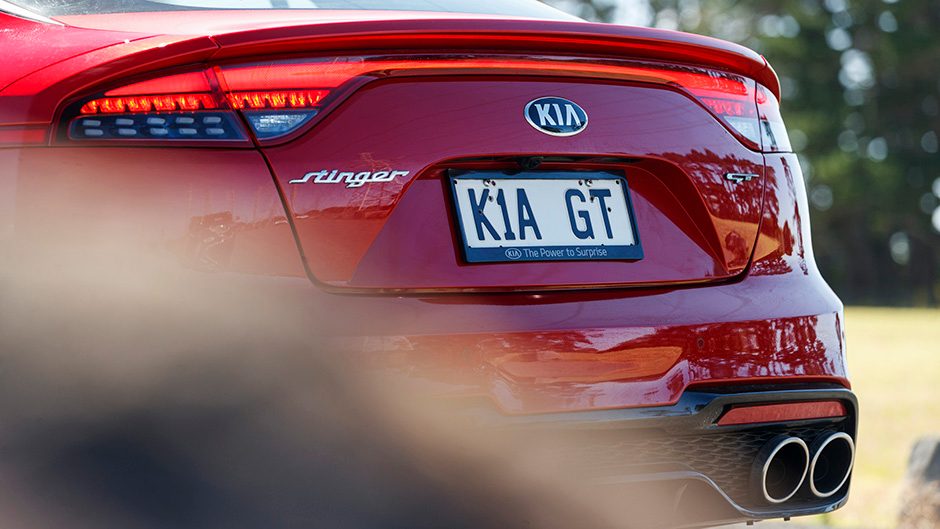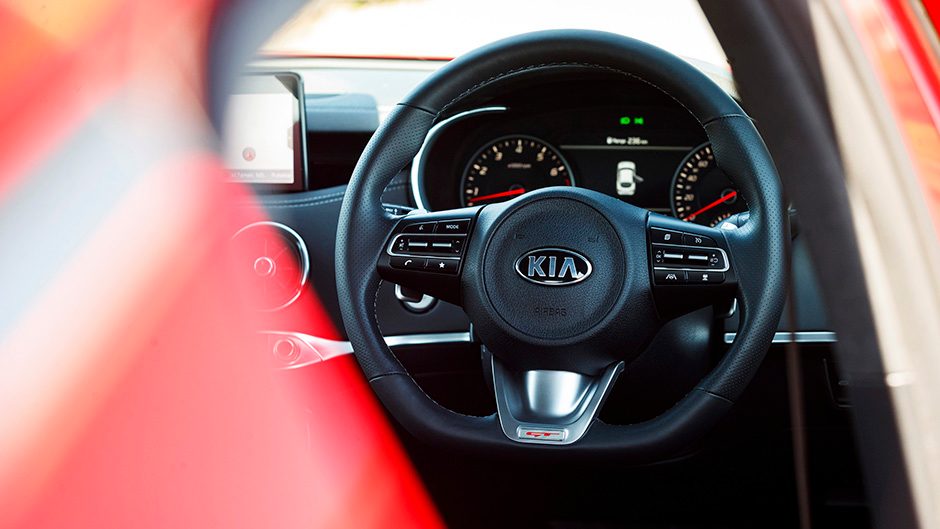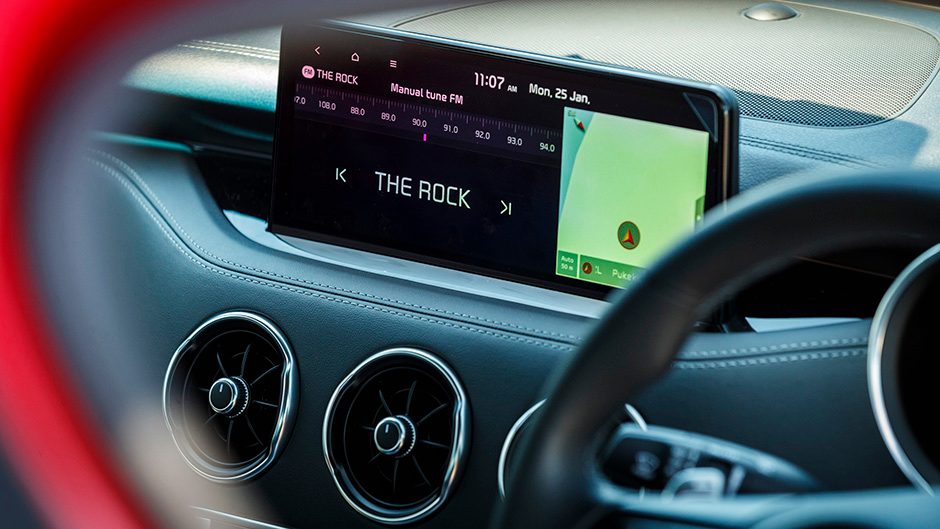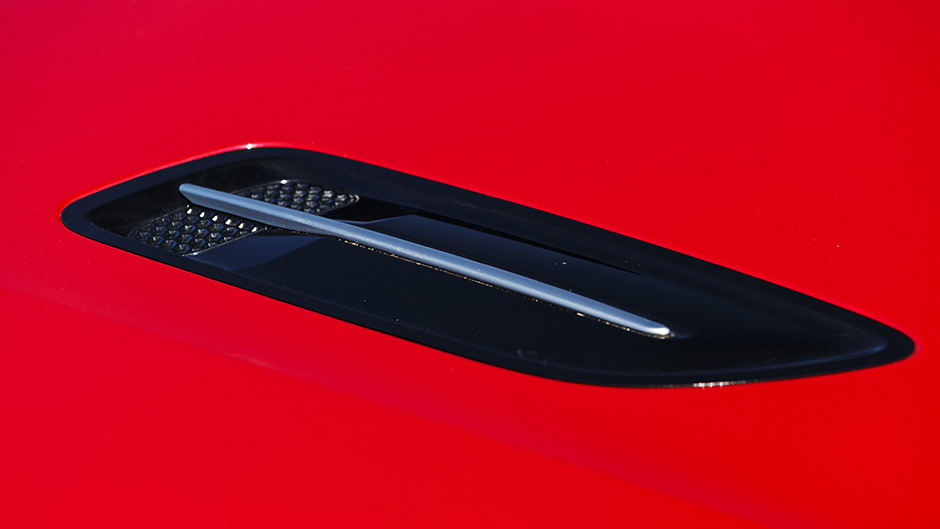That’s for when the GT is not quite enough. For there are two Stingers, as you probably recall; there’s the one that people don’t buy much, the GT with a 2.0L turbopetrol, and there’s the one they do, the rortier 3.3L V6 twin-turbo variant, hence the Sport suffix. For every three Sport variants sold, someone buys the two litre.
In 2020, that meant 100 of the former were sold and 23 of the latter. Earlier on, the disparity was even greater, 85 per cent plumping for the big dog. People still like the faster and (only slightly) better equipped model, clearly, and while it has increased in price by $5k (to $74,990), there’s a good reason for that; a new sports exhaust, an expansion of the safety net, and improved interior explain the extra cost for 2021. It’s the same story for the GT, up $5k to $64,990.

So what’s involved precisely? There’s a “new touch of drama” to the car’s exterior styling, supposedly modernised and more muscular. It’s (barely) noticeable back and front, though there are new combination LED lamps at the rear, travelling the width of the car. There are also new alloy wheel designs, 19-inch examples and bigger bore exhaust outlets with new tail trim.
Moving to the interior and the architecture is the same but there are updates to the infotainment system, now a 10.25-inch unit with split screen capability, and better materials used like, for example, the move from standard to soft nappa leather, at least in the GT Sport. While on that, there’s a fresh new upholstery design theme on the seats that resembles the bands of a metal watch strap. It’s a good look. There’s also contrast stitching on the dashboard and doors that’s new, as is a gloss black finish along the front of the dash.
The steering wheel is different too, with a new metallic finish in the lower quadrant similar to that surrounding the instruments. On the safety front, there’s now a blind spot view monitor, activated when indicators are in use, and relaying the view to the trip data screen between the speedo and rev counter. Handy. And a host of new advanced driver assistance systems, like junction assist (prevents collisions with cars coming from the opposite direction when turning right), safe exit warning (limits incidents that occur when opening doors of a parked car in the face of following traffic), blind spot collision avoidance (brakes if a collision is likely when lane changing), and lane centring (which can be switched off).

And the final update; the rearview mirror is now a more modern frameless look.
Mechanically the tweaks are relatively minor, power up a couple of kaydubs to 274 total, though torque of 510Nm on from 1300rpm is unchanged. Evidently there’s now a remote engine start function which permits a warm-up or cool down of the interior.
We said we’d be mighty surprised to see any performance increment, despite the addition of a new bimodal electronic variable exhaust valve system that’s said to improve exhaust gas flow. That’s because the GT Sport now seems to weigh a bit more, by roughly 20kg, than before. Perhaps there’s more soundproofing behind the “added refinement and luxury”.

Colour us unsurprised then because, despite a sprinkling of summer rain, the performance numbers were virtually unchanged. Compared with the Neon Orange pack with the sports exhaust we drove in 2019, there was just one hundredth of a second difference in sprint time (4.7sec) while we got the 80-120 down by an extra tenth this time around (2.7sec). Unfortunately, the haste isn’t quite matched by a balls’n’all soundtrack but then it’s not that easy getting a V6 to sing, especially one with two turbos in the line of fire. Perhaps that’s all part of the added luxury this year.
Gas use is pretty decent, registering a top of about 12L/100km, and some of the time we mooched it into single figures.
It’s such a fun drive this, effortless grunt available from almost silly low revs. In Comfort mode in town this can keep up with about anything even if you’re not trying that hard, while the ride and refinement are peerless at this money. Out on faster more flowing roads, we really liked the Smart mode which is similar to Auto or Adaptive settings for vehicles with active suspension. There’s about as much body control as in Sport, without upsetting that luscious ride quality. Sport is good too, just a bit more single minded.

Driving something like this, you’re reminded of how wonderful low flying saloons are compared with higher riding heavier SUVs. And the Brembos on the GT Sport are the best on anything out of Korea, tactile, strong and nailing a best stop from 100 of 32m, thanks partly to the sticky-icky Pilot Sport 4 rubber.
It may not be new but the updates add lustre, and there’s the comfort of a five-year warranty and four years of complementary servicing. Moreover, there’s little competition for the four-door saloon these days, at least at this price point.
| Model | Kia Stinger GT Sport |
| Price | $74,990 |
| Engine | 3342cc, V6, T/DI, 274kW/510Nm |
| Drivetrain | 8-speed auto, rear-wheel drive |
| Fuel Use | 10.2L/100km |
| C02 Output | 239g/km |
| 0-100km/h | 4.70sec |
| Weight | 1816kg |


